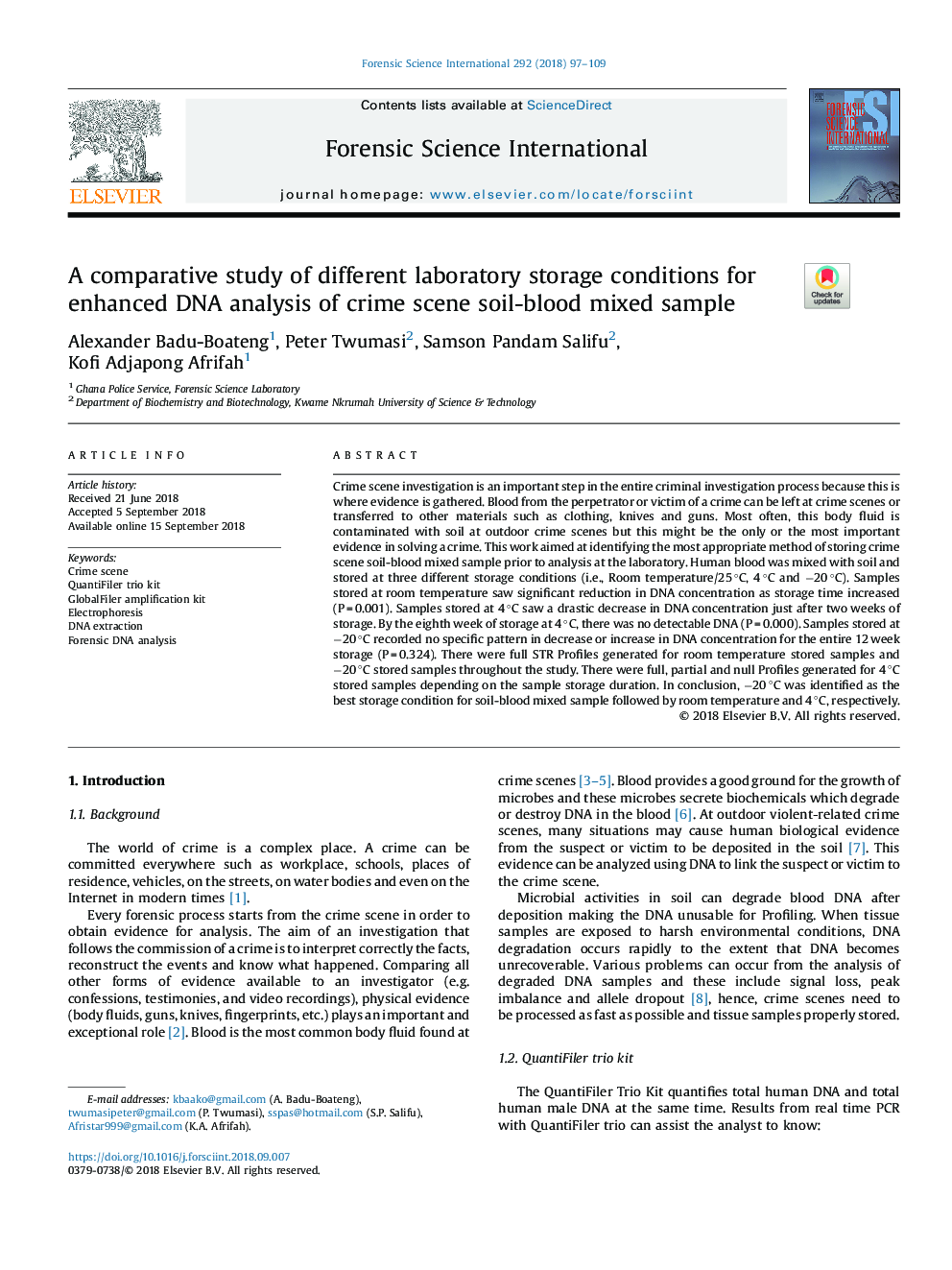| Article ID | Journal | Published Year | Pages | File Type |
|---|---|---|---|---|
| 11024532 | Forensic Science International | 2018 | 13 Pages |
Abstract
Crime scene investigation is an important step in the entire criminal investigation process because this is where evidence is gathered. Blood from the perpetrator or victim of a crime can be left at crime scenes or transferred to other materials such as clothing, knives and guns. Most often, this body fluid is contaminated with soil at outdoor crime scenes but this might be the only or the most important evidence in solving a crime. This work aimed at identifying the most appropriate method of storing crime scene soil-blood mixed sample prior to analysis at the laboratory. Human blood was mixed with soil and stored at three different storage conditions (i.e., Room temperature/25 °C, 4 °C and â20 °C). Samples stored at room temperature saw significant reduction in DNA concentration as storage time increased (P = 0.001). Samples stored at 4 °C saw a drastic decrease in DNA concentration just after two weeks of storage. By the eighth week of storage at 4 °C, there was no detectable DNA (P = 0.000). Samples stored at â20 °C recorded no specific pattern in decrease or increase in DNA concentration for the entire 12 week storage (P = 0.324). There were full STR Profiles generated for room temperature stored samples and â20 °C stored samples throughout the study. There were full, partial and null Profiles generated for 4 °C stored samples depending on the sample storage duration. In conclusion, â20 °C was identified as the best storage condition for soil-blood mixed sample followed by room temperature and 4 °C, respectively.
Related Topics
Physical Sciences and Engineering
Chemistry
Analytical Chemistry
Authors
Alexander Badu-Boateng, Peter Twumasi, Samson Pandam Salifu, Kofi Adjapong Afrifah,
